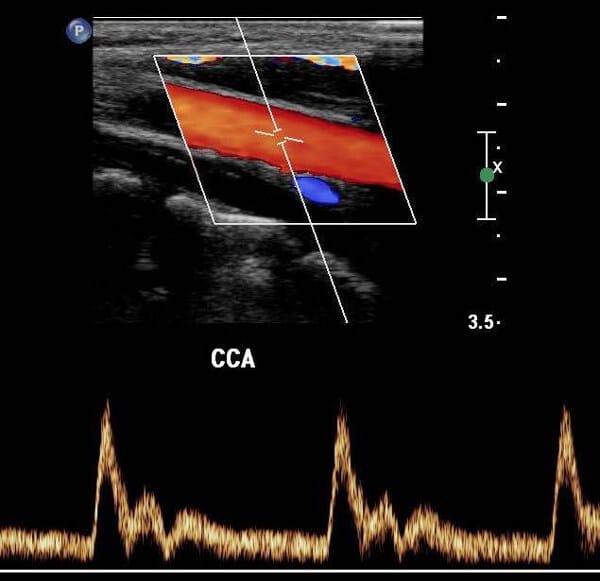Services
Deep Vein Thrombosis (DVT)
Services
Deep Vein Thrombosis (DVT)
Services
Deep Vein Thrombosis (DVT)
Services
Deep Vein Thrombosis (DVT)
Services
Deep Vein Thrombosis (DVT)
Services
Deep Vein Thrombosis (DVT)
Services
Deep Vein Thrombosis (DVT)

Quick Links
What is a DVT Doppler Ultrasound?
A Deep Vein Thrombosis (DVT) Doppler Ultrasound is a special type of ultrasound which is used to measure blood flow through the upper limb veins as well as the deep leg veins and assess any blockage to blood flow such as a blood clot. DVT commonly occurs in calf veins, and occasionally in those of the thigh.
When isolated in the leg veins, DVT can result in pain, skin inflammation and ulceration. However, if the clot breaks off and travels through the bloodstream into the lungs, it is known as pulmonary embolus which can be life-threatening.
What happens during a DVT Doppler Ultrasound?
A. Before your scan
What to bring
- Your request form
- Any relevant previous imaging
- Your Medicare card and any concession cards
Preparation – the day of your procedure
There is no specific preparation and you may eat and drink as desired before and after the procedure.
You will be asked to fill out a questionnaire regarding your health status, medication, and any known allergies. You may be asked to change into an examination gown and remove jewellery for your scan.
B. During your DVT Doppler Ultrasound
Procedure
You will be made comfortable on the examination table. Gel will be applied to the area being imaged to help create a good contact between you and the ultrasound probe. The probe will be placed directly onto the gel and your skin for the duration of the examination. For a DVT Doppler Ultrasound, the probe will be passed lightly over the skin above blood vessels in your legs. The Doppler sounds are transformed into colours on a computer that are overlaid on the image of the blood vessel. These colours show the speed and direction of blood flow through the vessel and help pinpoint any blockages or clots.
If you are having this examination it is common to hear strange noises as the signals coming from the flowing blood are converted into sound. Sometimes the sonographer will have to gently squeeze the calf a few times when examining the veins in the legs. This should not be painful.
Most Doppler studies will be completed within 30-60 minutes. It is not unusual for the radiologist to come in and speak with you and view the images on the screen. At the end of the procedure the gel is simply wiped from your skin so that it does not mark your clothes.
Risks and side effects
Ultrasounds are a very low risk procedure and complications are rare however you should be informed of the possible risks and side effects.
Risks associated with this procedure include:
- If scanning is performed over an area of tenderness, you may feel pressure or minor pain from the transducer.
Any medical procedure can potentially be associated with unpredictable risks.
Who will perform my DVT Doppler Ultrasound?
Your ultrasound will be performed by a Radiologist (medical specialist) or a sonographer (a specially trained technologist).
What happens after a DVT Doppler Ultrasound?
How do I get my results?
After your appointment, the information from your scan is interpreted by Envision’s Radiologist before delivery of a report to your doctor.
Post-procedure
You should be able to go about your daily activities after your appointment.
Doppler Ultrasound
Types of Imaging
Doppler Ultrasound
Types of Imaging
Doppler Ultrasound
Types of Imaging
Doppler Ultrasound
Types of Imaging
Doppler Ultrasound
Types of Imaging
Doppler Ultrasound
Types of Imaging
